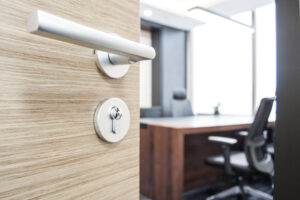
Using a Doorway as a Positive Mental Trigger
We’ve all walked into a room and forgotten why we went in there.
And – I love this one – the same thing can happen when we open the fridge door! All part of the same brain process.
The number of times I’ve opened the fridge and stared blankly at the shelves…you can probably relate!
There’s science behind this momentary blank: it’s called the doorway effect – and we can use it to our advantage.
So it’s something I often recommend to clients as a reset before going into an event.
Researchers at the University of Notre Dame found that walking through a doorway acts as a mental “reset button.”
It tells your brain:
“New space, new context. Time to wipe the mental slate clean.”
So how is this useful in the communication skills context?
You can flip the ‘effect’ and use a doorway as an intentional trigger. If you’ve been around me for a while, you might remember – I repeat this a lot – that high-performance behaviours are intentional.
Random is common – and usually not enough, if you want to be heard or stand out.
So, particularly if you have a stressful event, be intentional.
Some research
In a 2011 study, psychologist Gabriel Radvansky and colleagues had people carry objects through virtual and real-world rooms. They were much more likely to forget what they were holding after walking through a doorway—even if the task was the same.
Their brains had filed the experience as “done,” just because the environment changed. It’s called event segmentation—and we all do it automatically.
You can shift out of auto, take charge, and be in control of the process.
Action step
Choose one doorway you’ll walk through before needing to shift your mood, or state.
Whether that’s a presentation, meeting, or even arriving home in the evening after a hectic day before you walk in.
Some clients already do this, to help them let go of the day and be present.
Choose your statement (keep it short and easy to remember), or even choose just a word.
Examples:
- When you walk through your office door: “Now I’m ready. Breathe!”
- As you enter a meeting room: “Strategic.”
- Before a difficult conversation: “Now I stay calm and clear.”
- Before a presentation: “Sarah, trust yourself. You’ve got this.”
Then when you’re in that moment, say it to yourself, either out loud (often more powerful) or internally if you need to.
You’re working with your brain’s natural tendency when you do this. And it helps.
Best wishes with all your communications.
Step Up | Be Heard | Stand Out